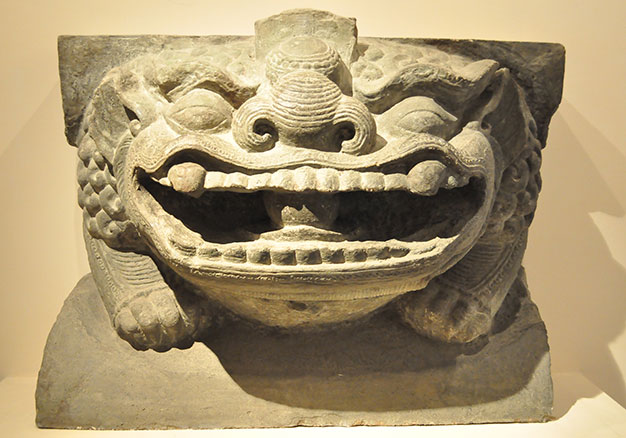Vietnam’s first exhibit on purely traditional Vietnamese mascots is running in Hanoi until November 17. The exhibit provides samples for local craftsmen to adopt in response to the culture ministry’s warning against the use of exotic mascots.
The exhibit, themed “The image of Sacred Lions and Dogs in Vietnam’s ancient Sculpture,” is running at Vietnam Fine Arts Museum, 66 Nguyen Thai Hoc, Ba Dinh District.
On display are some 60 Vietnamese mascots, mostly sacred lions and “nghe” (stylized dogs,) which span the country’s different dynasties.
According to the organizer, the prized collectibles boast various materials, including stone, porcelain, terra cotta, wood and bronze, shaping styles, display positions and spiritual significance.
The items have been collected and preserved by Vietnam Fine Arts Museum since its foundation in 1966.
The exhibit also features detailed annotations and articles which shed light on the objects’ historical and spiritual significance and crafting techniques.
Printouts of the mascots are also handed out so that students and visitors can color them.
Local researcher Tran Hau Yen The is also slated to give a presentation on the transitions between the original mascots and their variations spanning different periods, as well as their differences and similarities.
According to Phan Van Tien, the museum’s head, the exhibit aims to offer art enthusiasts and craftsmen the opportunity to find out about the mascots’ elaborated crafting techniques and their immense spiritual values.
The artifacts will also help craftsmen tell Vietnamese mascots from exotic ones and serve as samples for them to base on to create their purely Vietnamese mascots, he added.
After the exhibit closes in Hanoi, the organizer may bring it to central Da Nang City and northern Ninh Binh Province, which boast the country’s highest concentration of traditional mascot producers.
The suggested that an online museum of Vietnamese mascots be launched.
On August 8, the Ministry of Culture, Sports, and Tourism issued a document warning against the use of exotic mascots, particularly Chinese-style stone lions, in religious institutions and public agencies.
The warning came as a devastating blow to stone carving villages throughout the country, particularly in Da Nang and Ninh Binh, as few customers are willing to buy new Chinese-style mascots, and existing statues are being moved out of pagodas, temples, and public agencies.
As most stone mascot carving business has ground to a standstill, owners and craftspeople are struggling hard to find a way out.
According to local researchers, Vietnamese lions are different from their Chinese counterparts in many aspects.
The head of a Vietnamese lion typically features the word “king” in ancient characters, indicating that the lion is the king in the wild.
In addition, like other Vietnamese mascots, which are believed to have first appeared between the years 1010 and 1225 under the Ly Dynasty, Vietnamese lions generally hold a pearl in their mouth.
Their teeth are not sharp, and often feature decorative patterns. Their eyebrows, ears and snouts also bear cascading patterns.
Unlike their Chinese counterparts, Vietnamese lions do not display their muscular strength, but flexibility and good proportions are highlighted instead.
Meanwhile, Chinese lions are invariably featured as showing a muscular chest and sharp fangs in a menacing, intimidating manner.
The Department of Fine Arts, Photography and Exhibition, under the culture ministry, is currently collecting and sending Vietnamese mascot designs to culture departments across the country.




















































